Native American artifacts found in Snake Meadow
Snake Meadow and Snake Meadow Brook are some of the most beautiful countryside in the state. Add to that the unique natural characteristics of this area and I can understand why the Native American settled in this area.
After reaching the base of Snake Meadow Hill, I climbed a small mound and found what I felt was an alter. I went down the north side of the mound to Snake Meadow Brook. The prehistoric bridge was covered by a beaver dam. Unless I wanted to wade through the cold springtime water, I had to go around to the modern bridge. I took the time to have lunch before continuing my trek. Below is the beaver dam. There is little evidence of a bridge beneath this wooden structure.
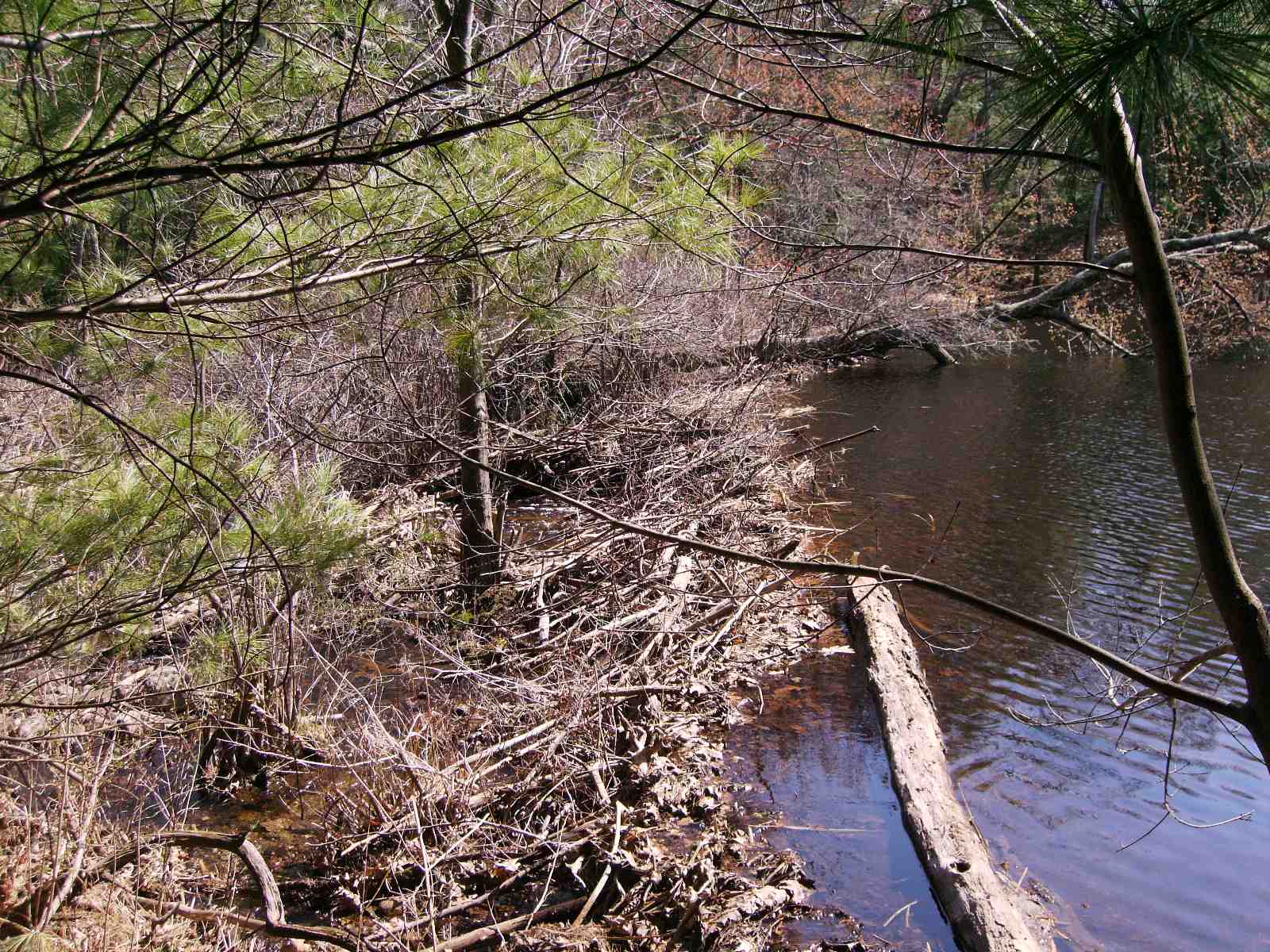
But, behind the dam are small stones that had been placed in the mud until it was possible to walk most of the distance to an actual stone bridge.
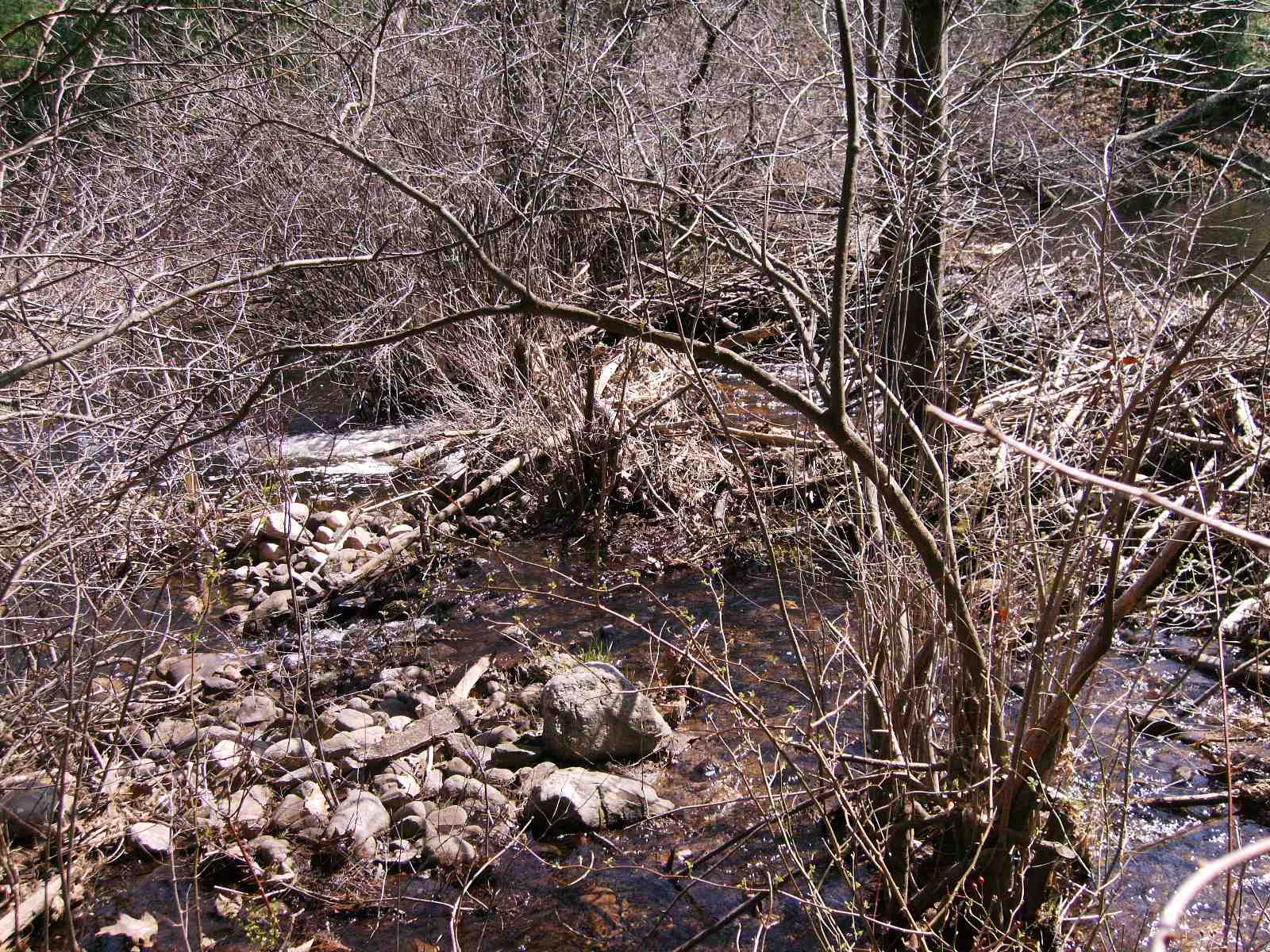
From downstream, it can be seen that the dam raises the water level by over a foot.
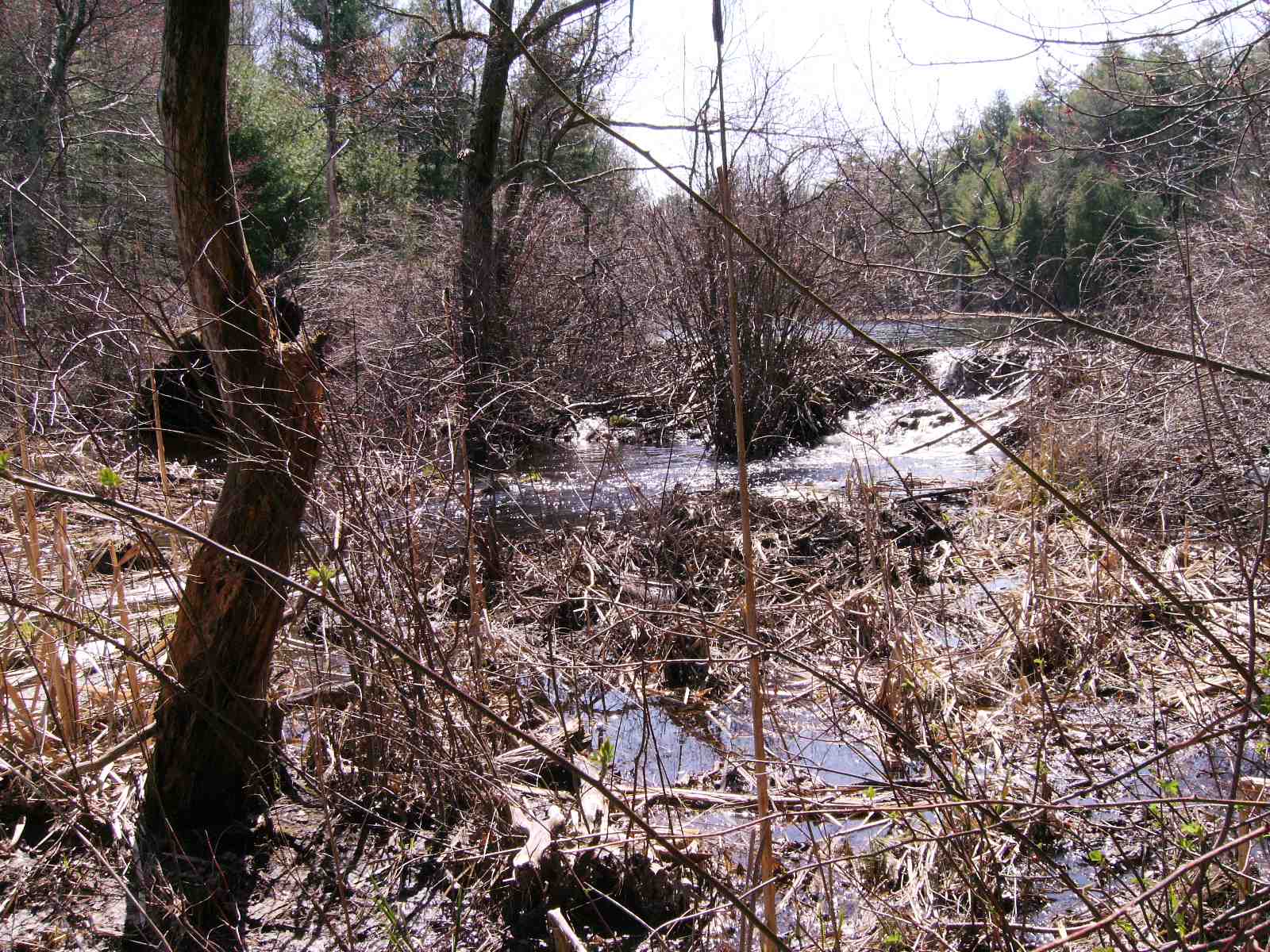
After crossing the brook and turning left into the west, the first thing is a large rock pile. It is over twenty feet long, ten feet wide and four feet high. It is too large to get into one photograph.
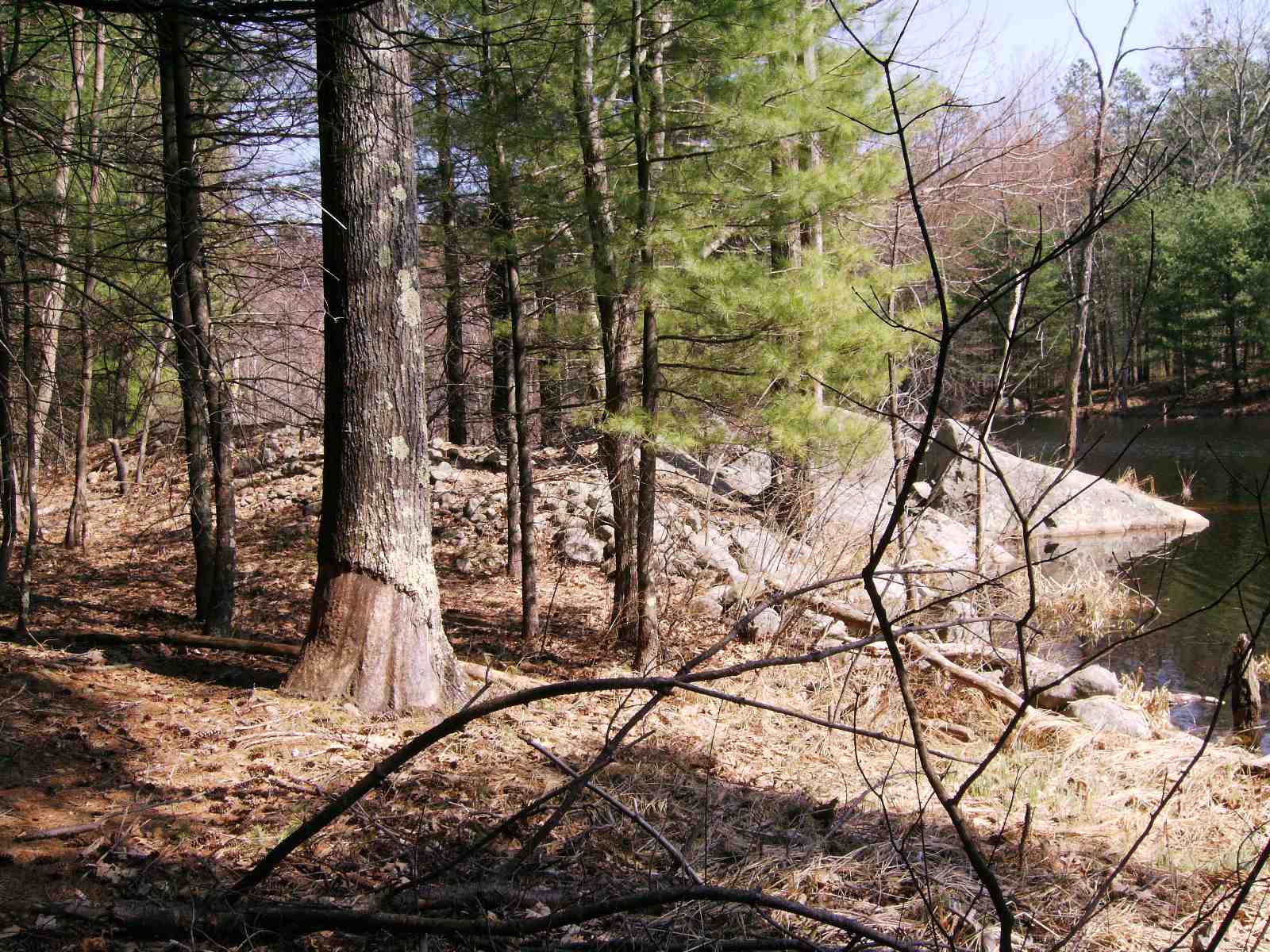
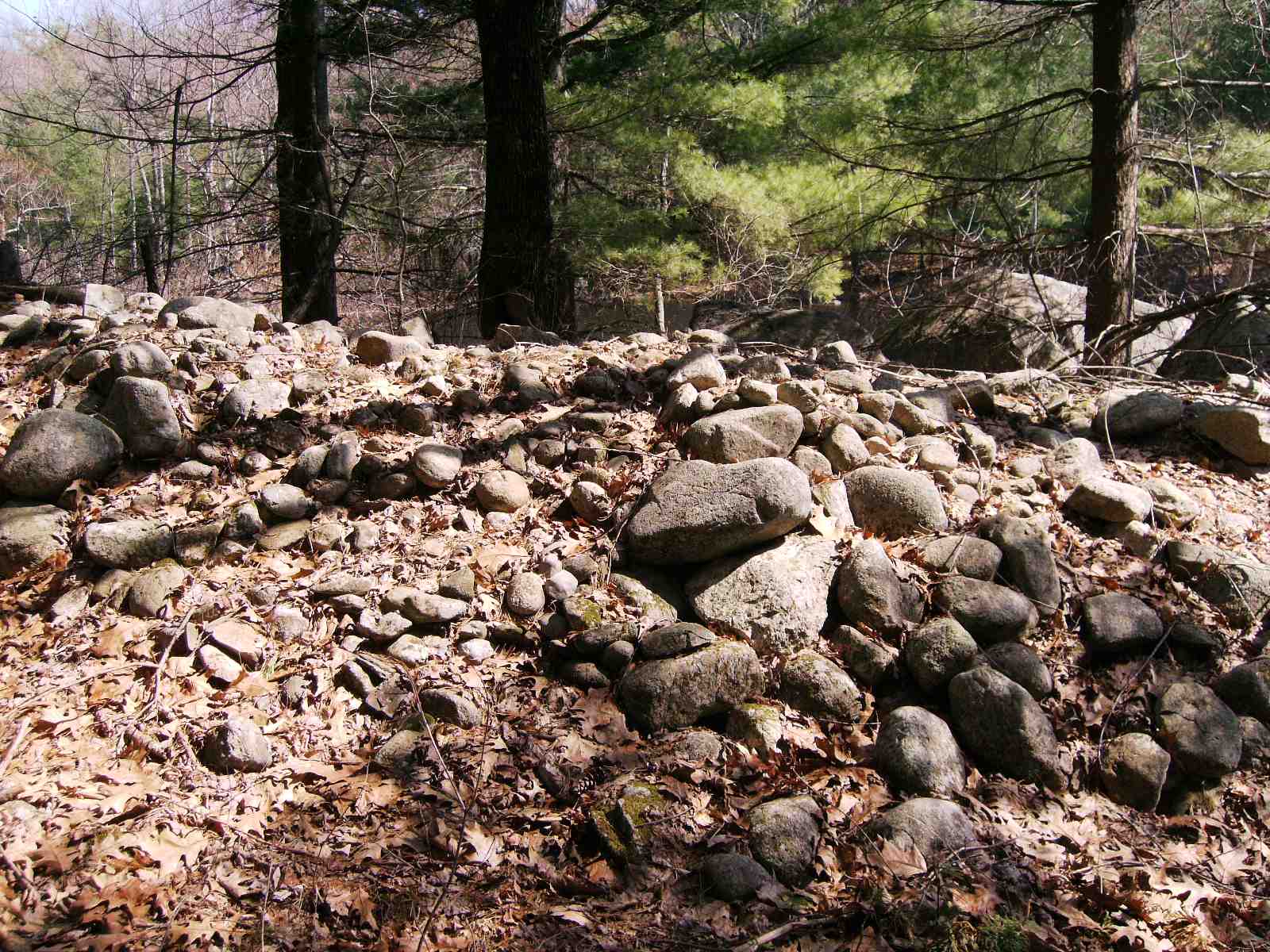
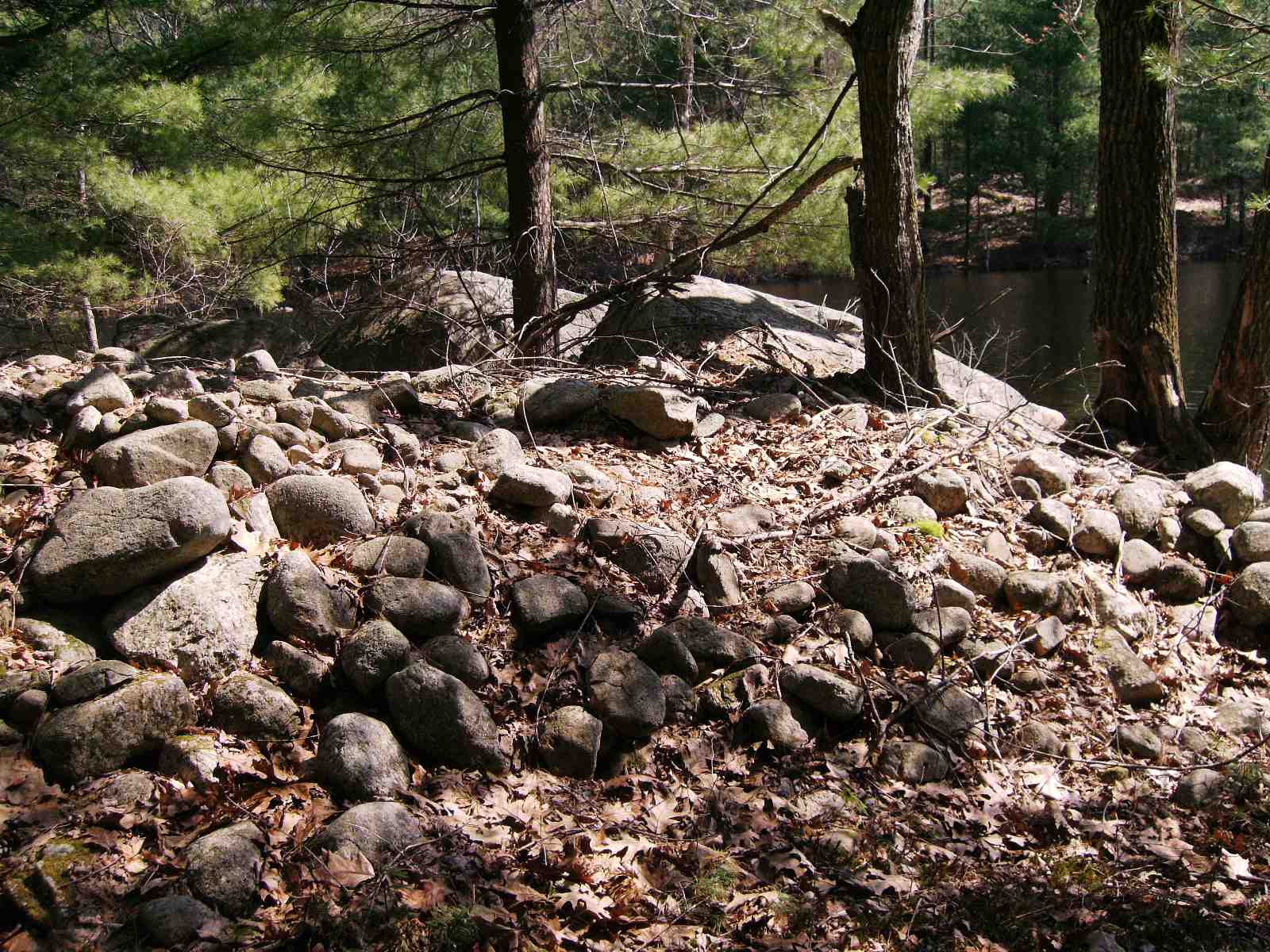
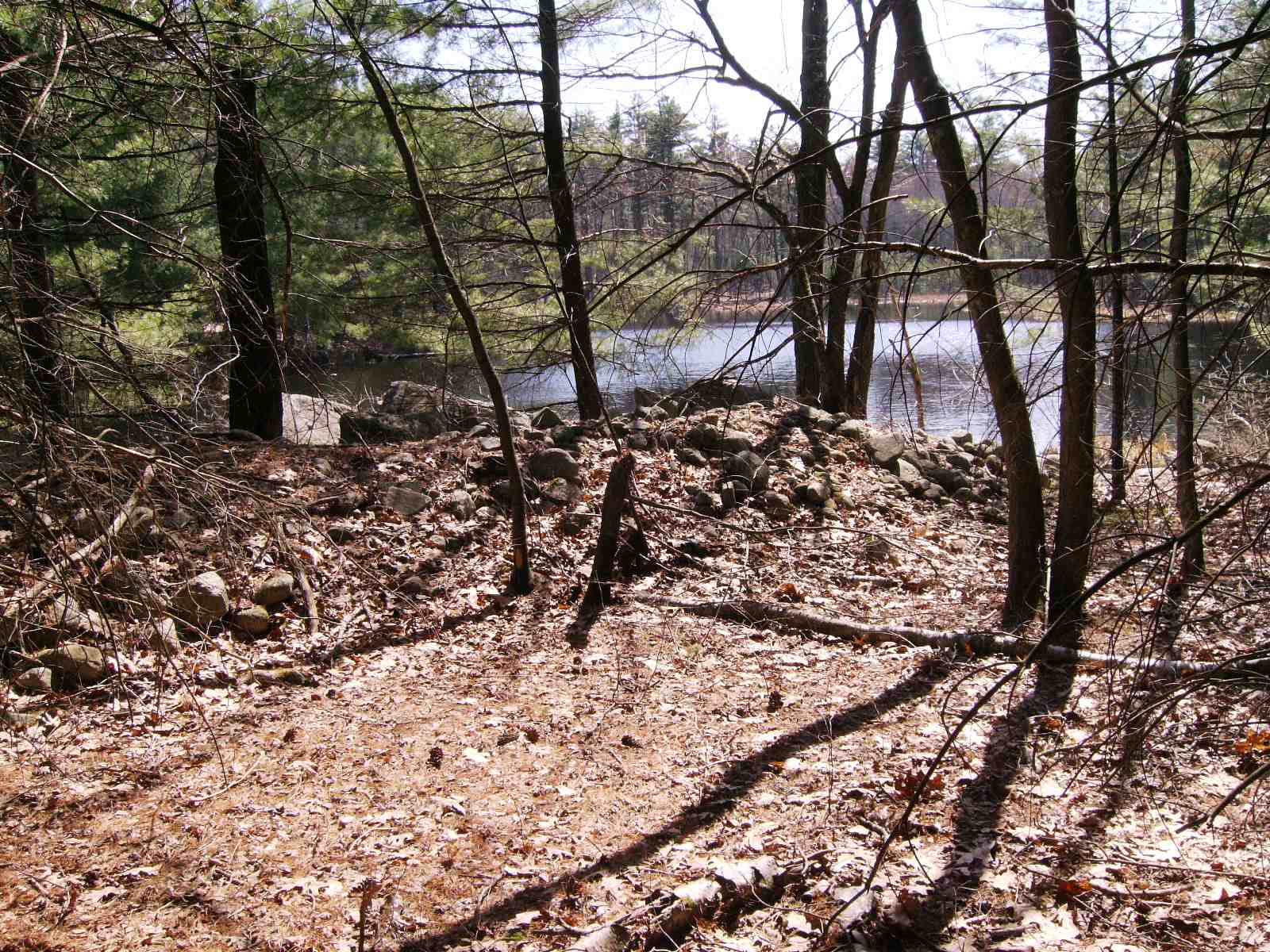
After continuing west for about a hundred feet, there is an obvious marker, pointing toward the large split stones. The marker is pointing west.
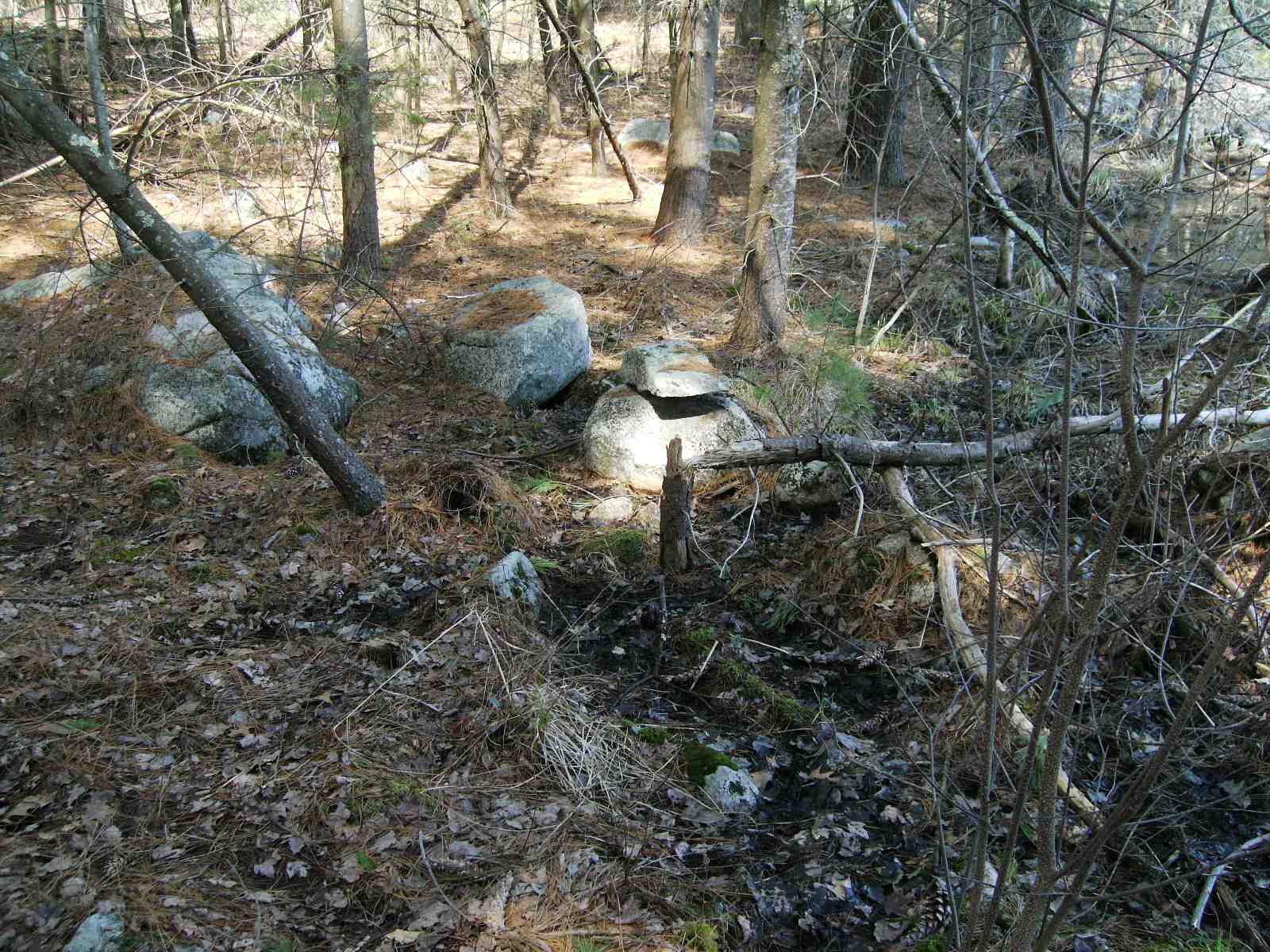
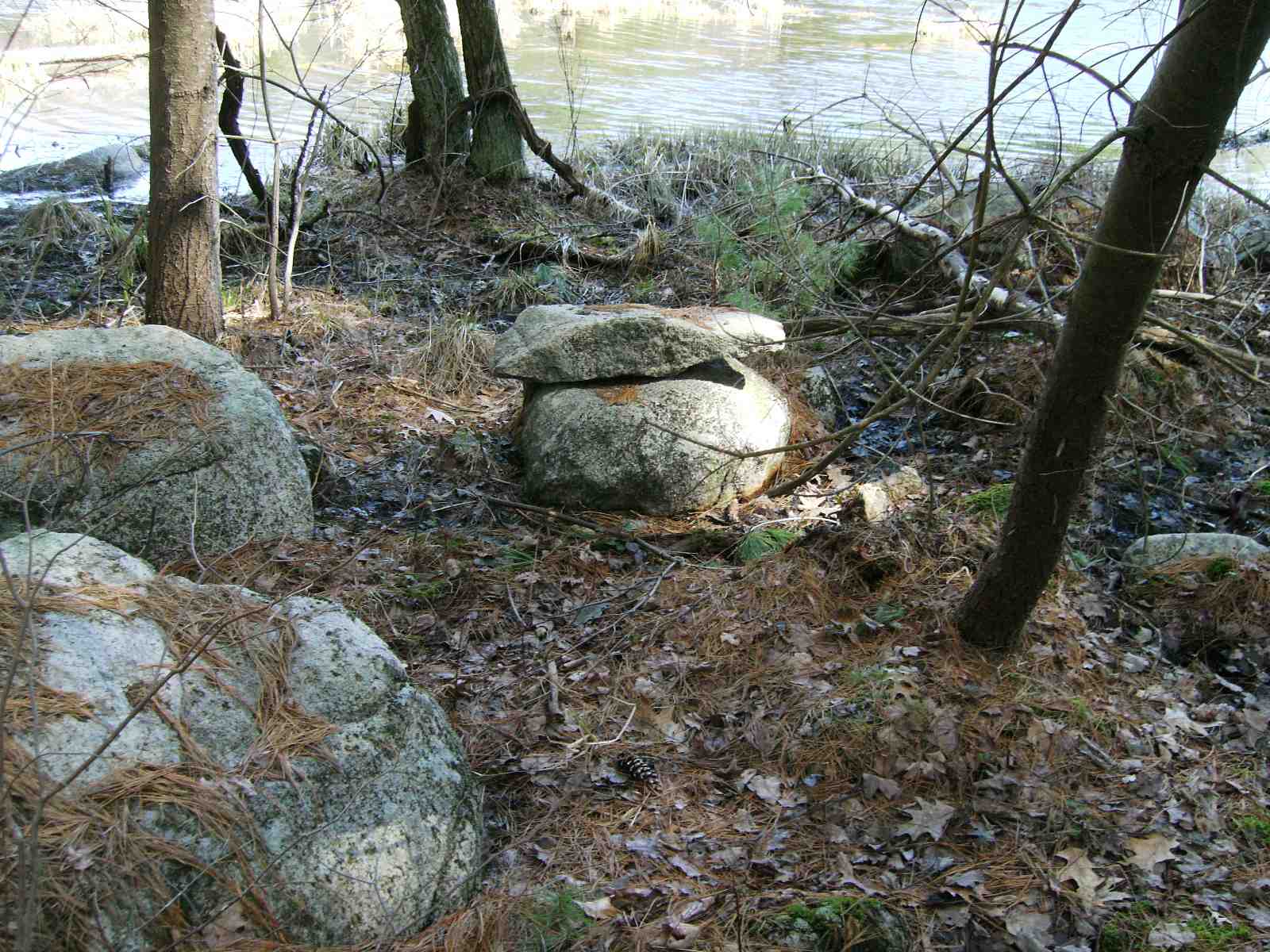
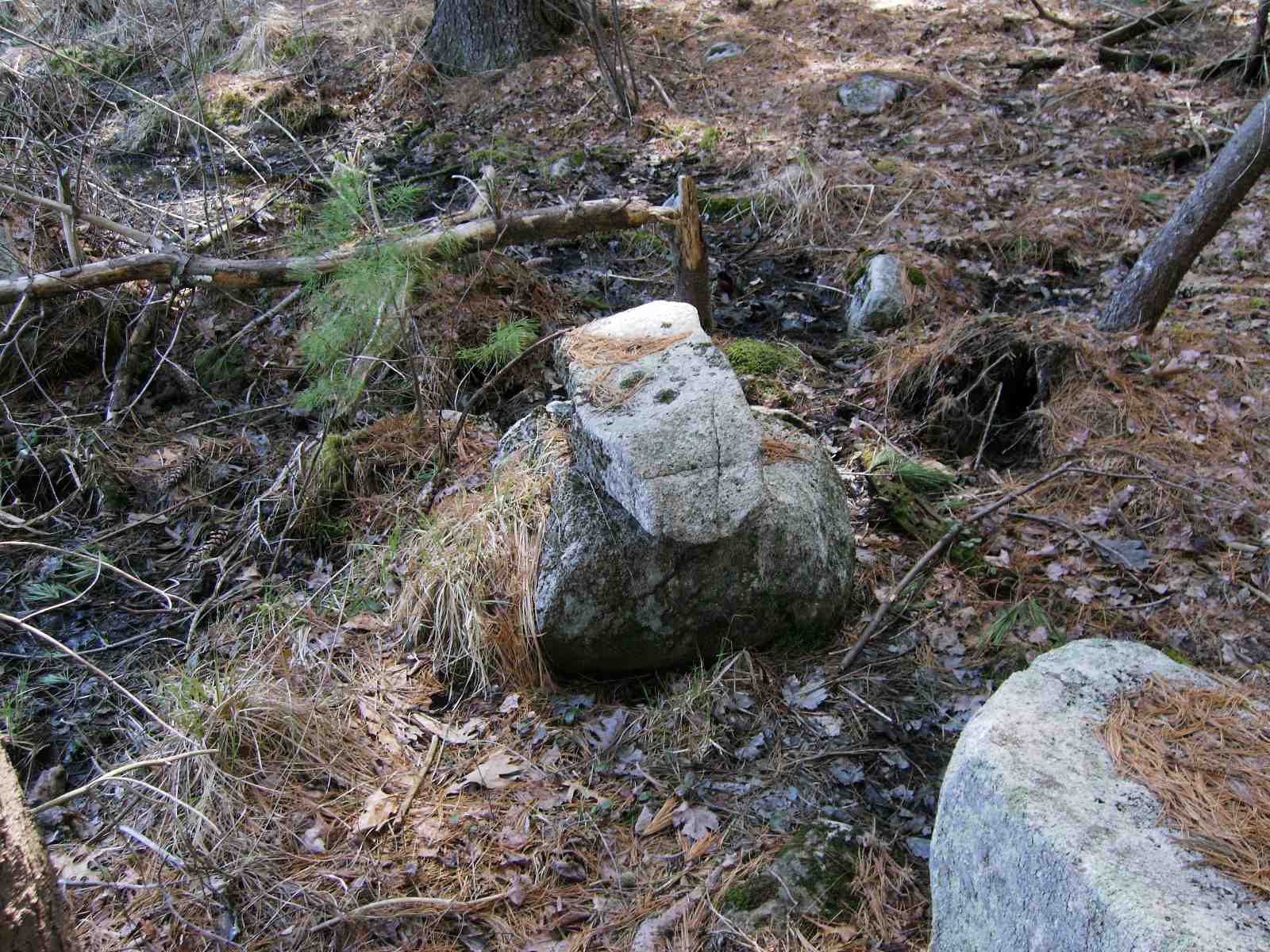
This is the first split stone that is encountered.
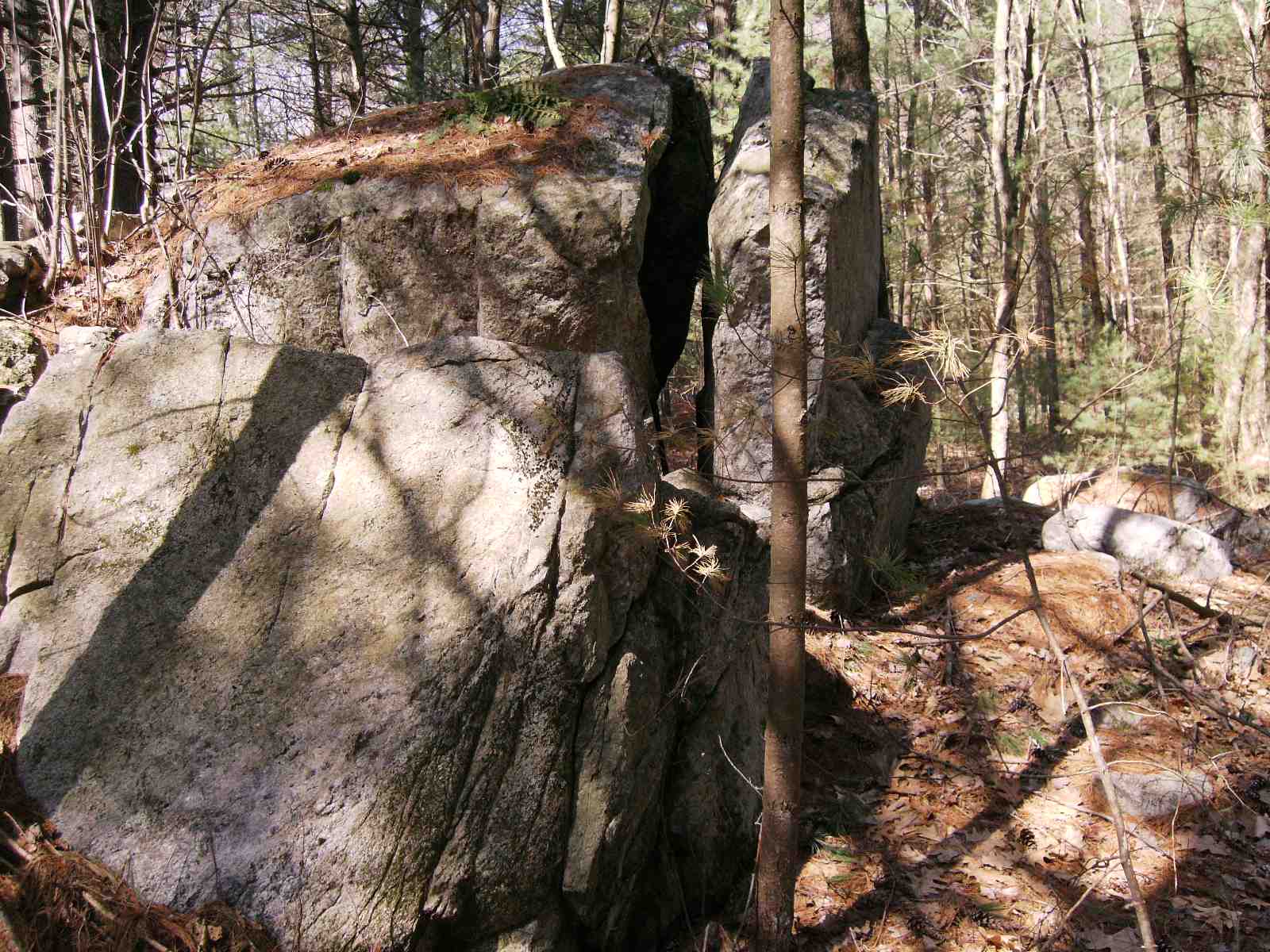
Note that one small rock is wedged into the split.
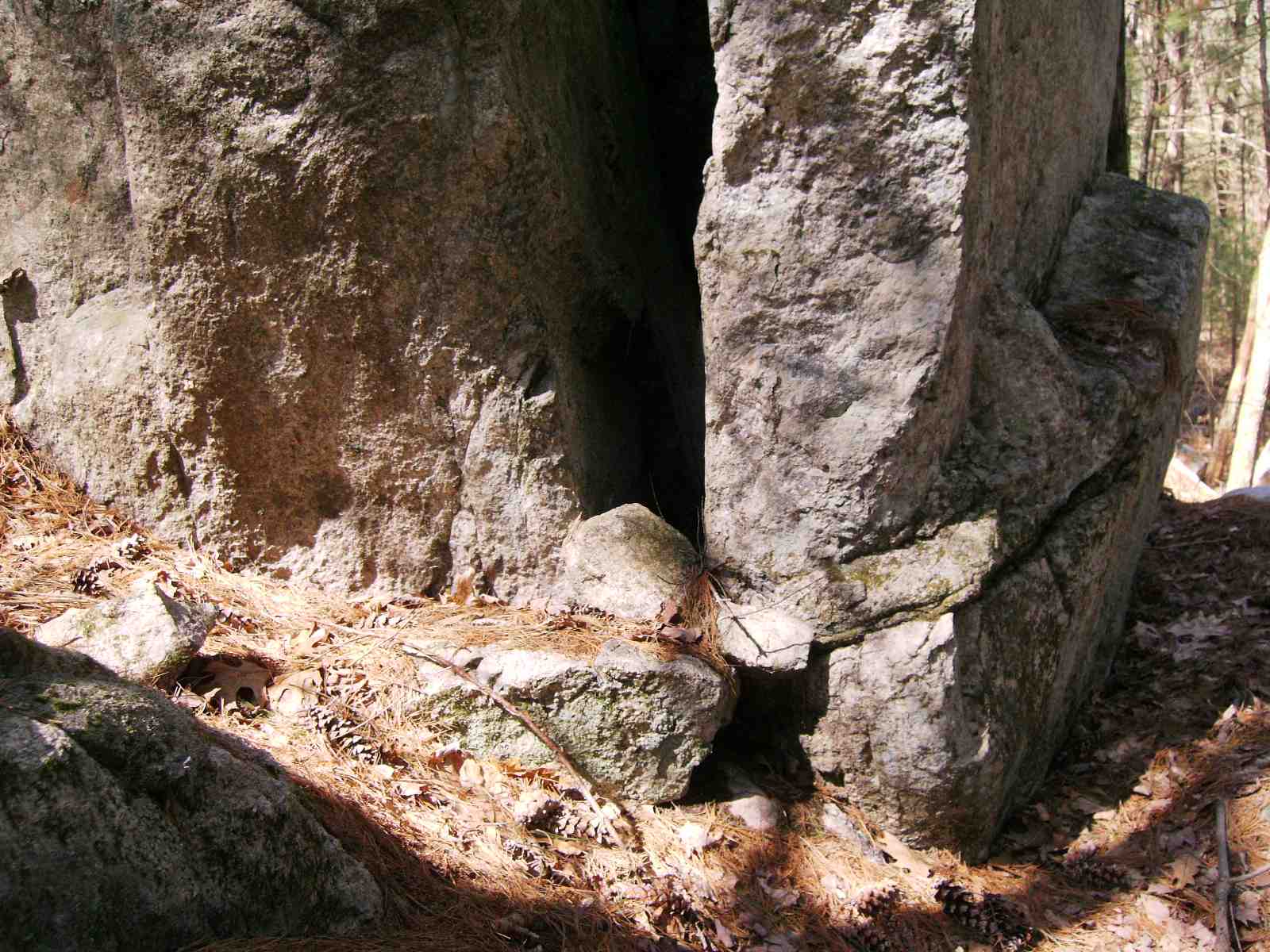
As we proceed westward, there is a small split rock.
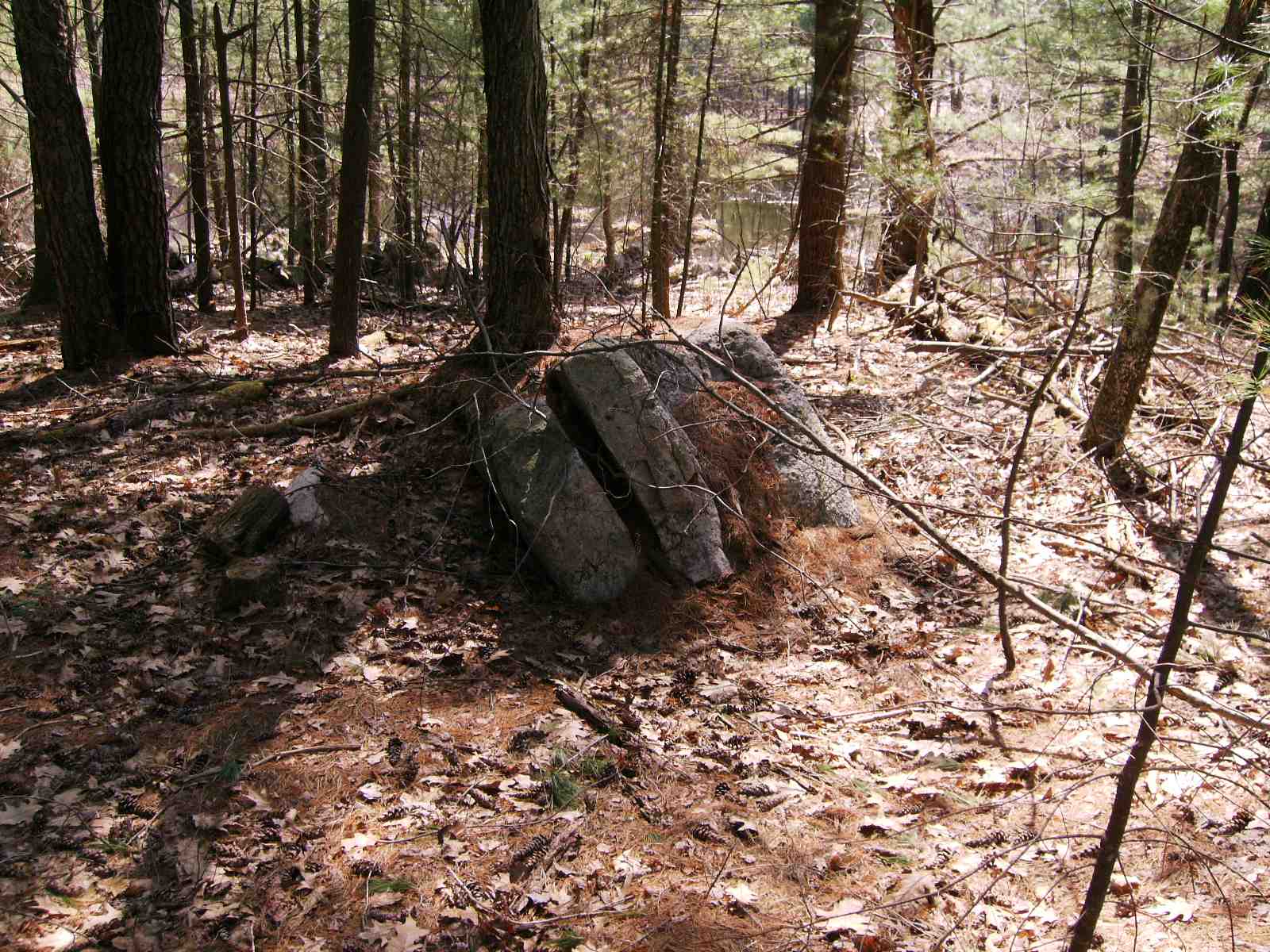
And then we come upon a major split stone. This stone is about ten feet tall. I have more pictures of this stone taken during the winter at Boulders-East-1.
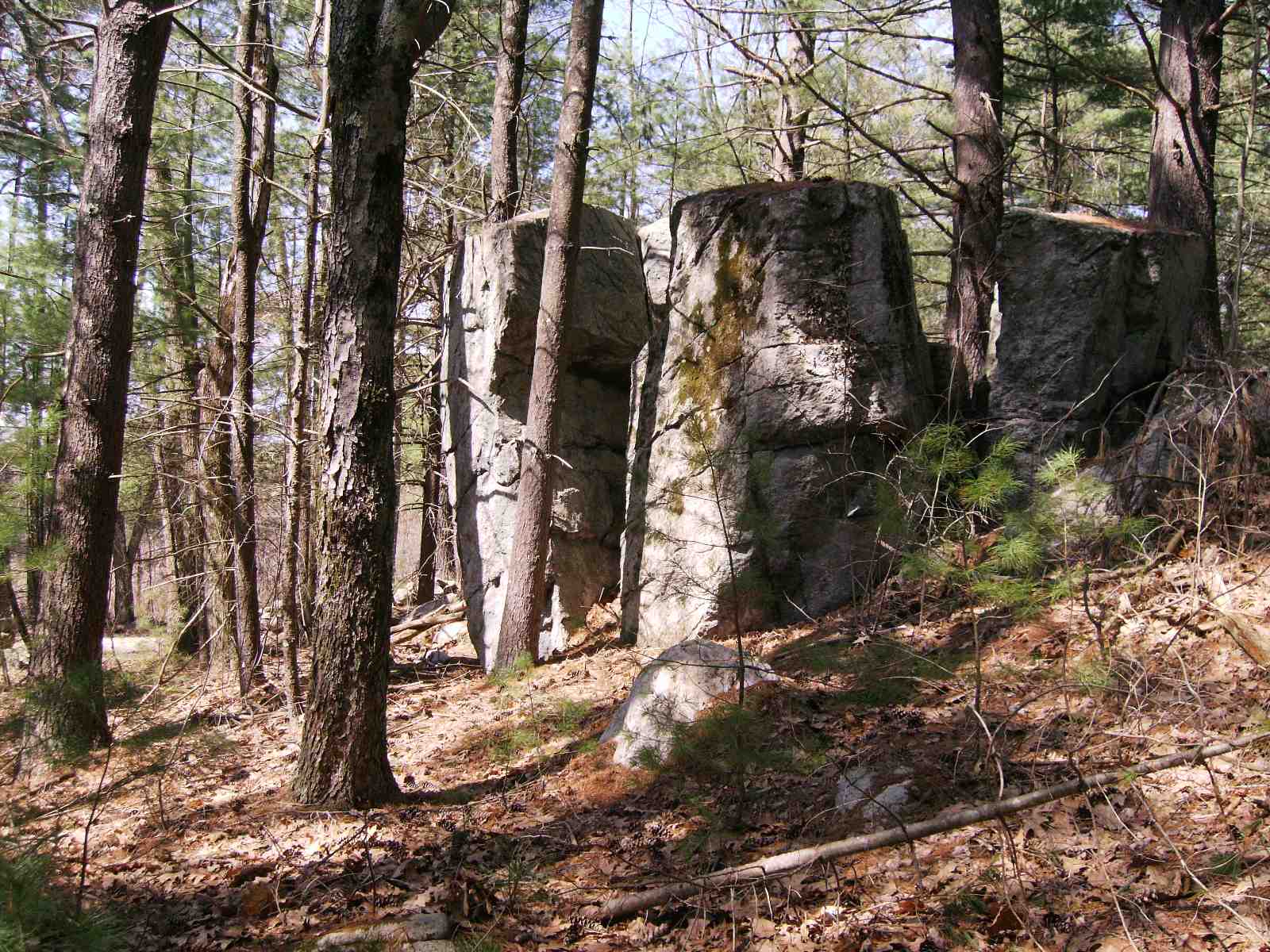
In front of the stone is a cairn with a few small stones.
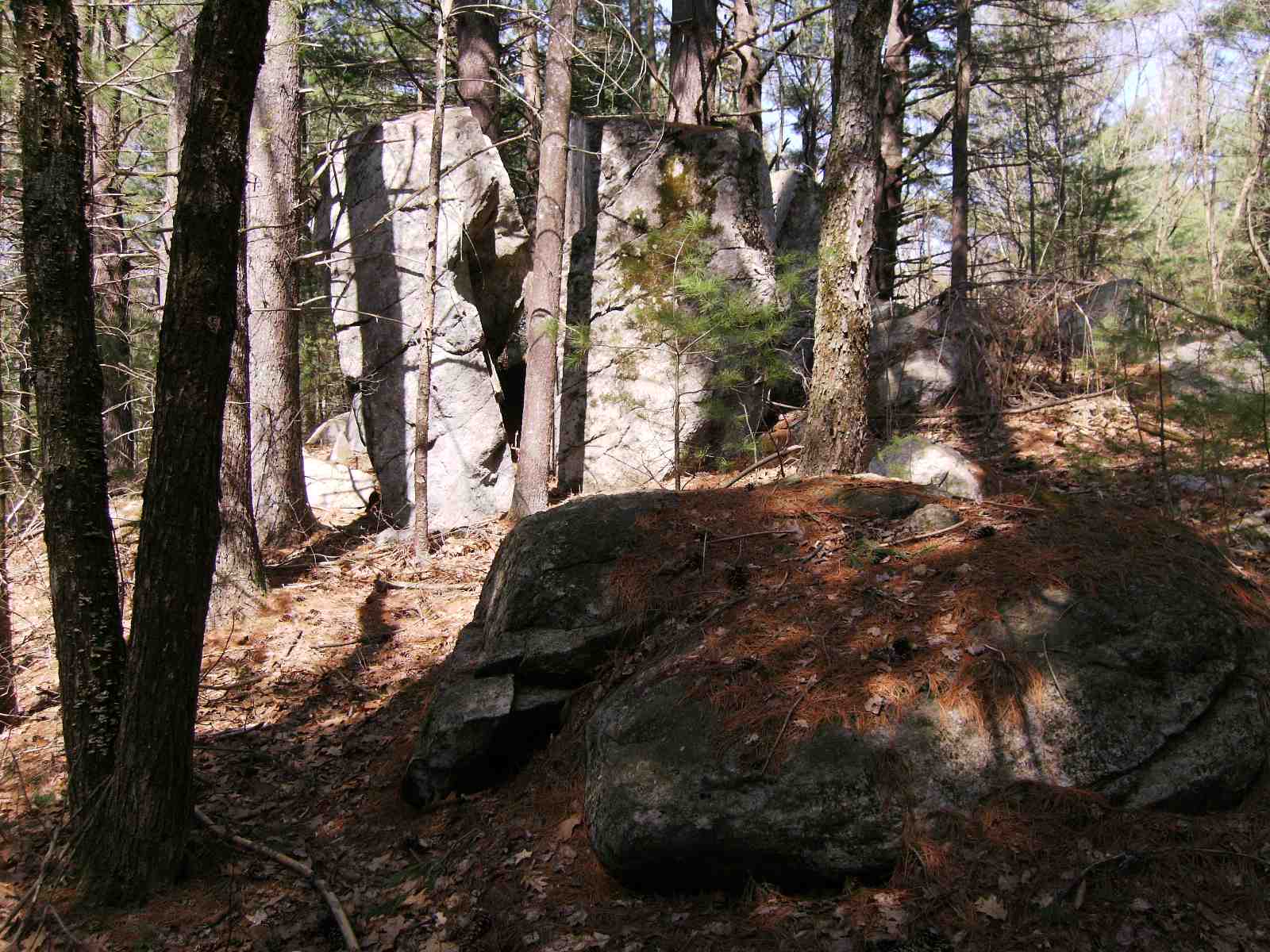
Stepping back, there is a row of stones almost buried.
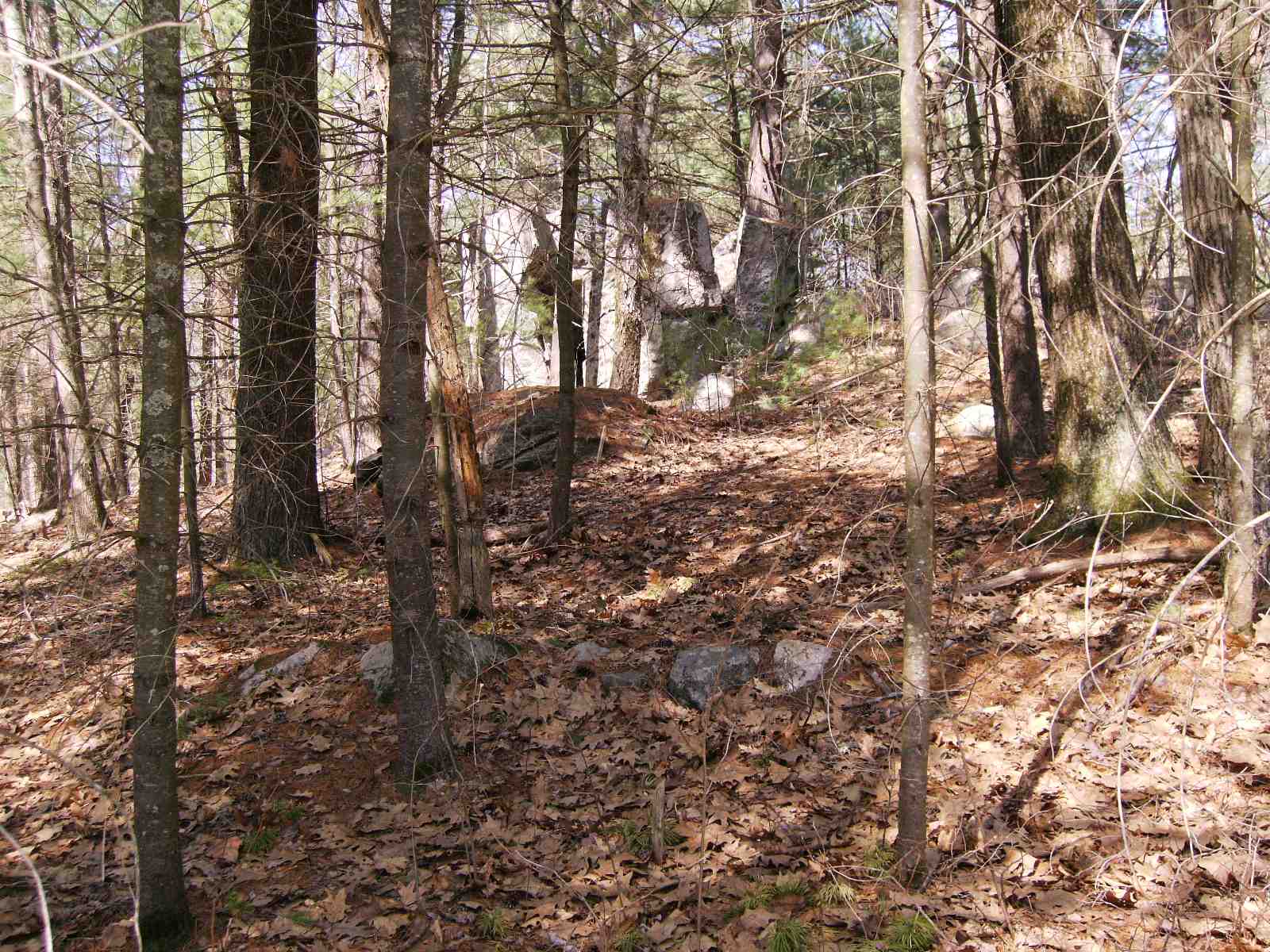
On the western side of this split rock is a triangular stone.
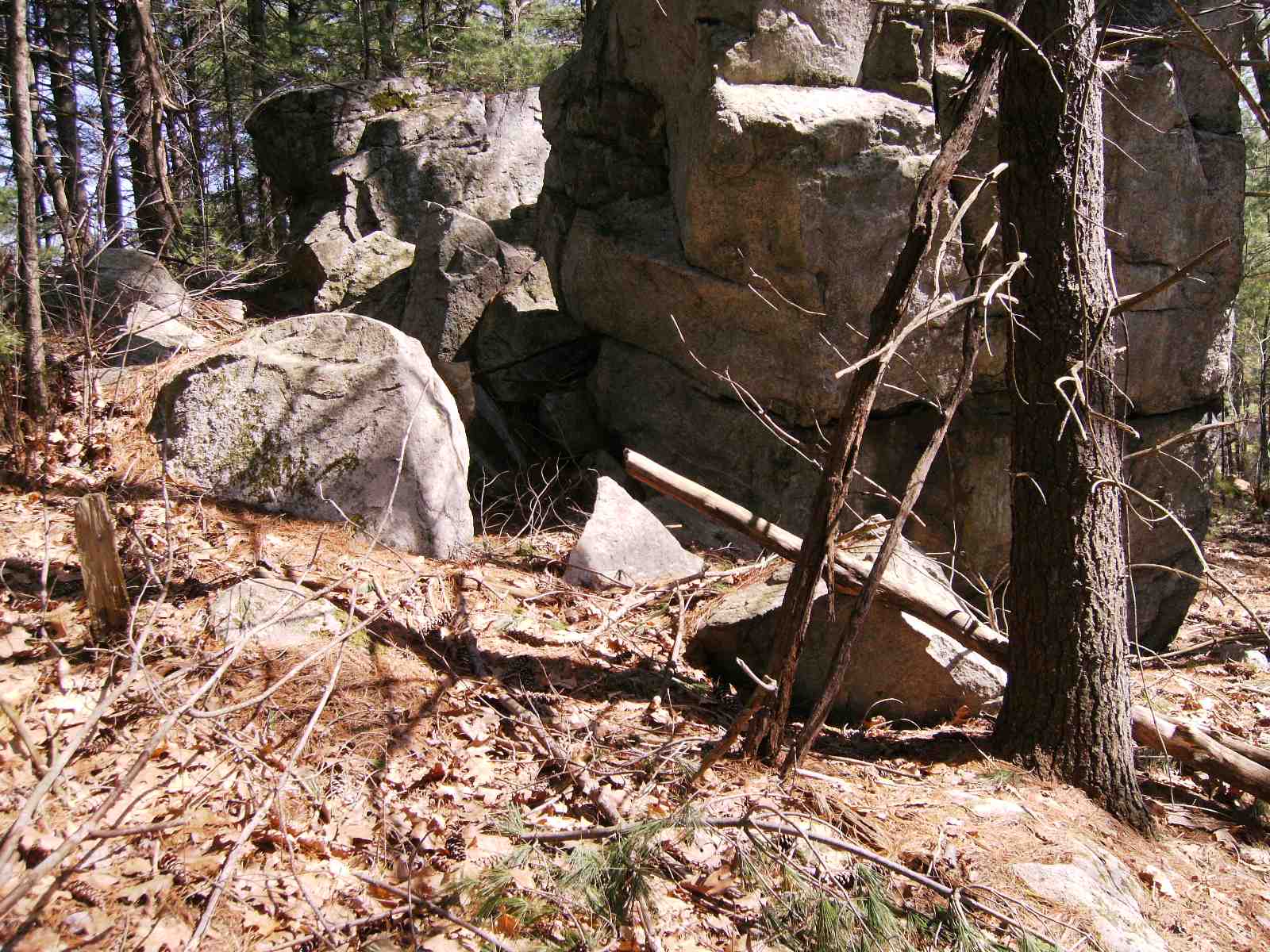
On closer examination, it is a pyramid with a triangular base.
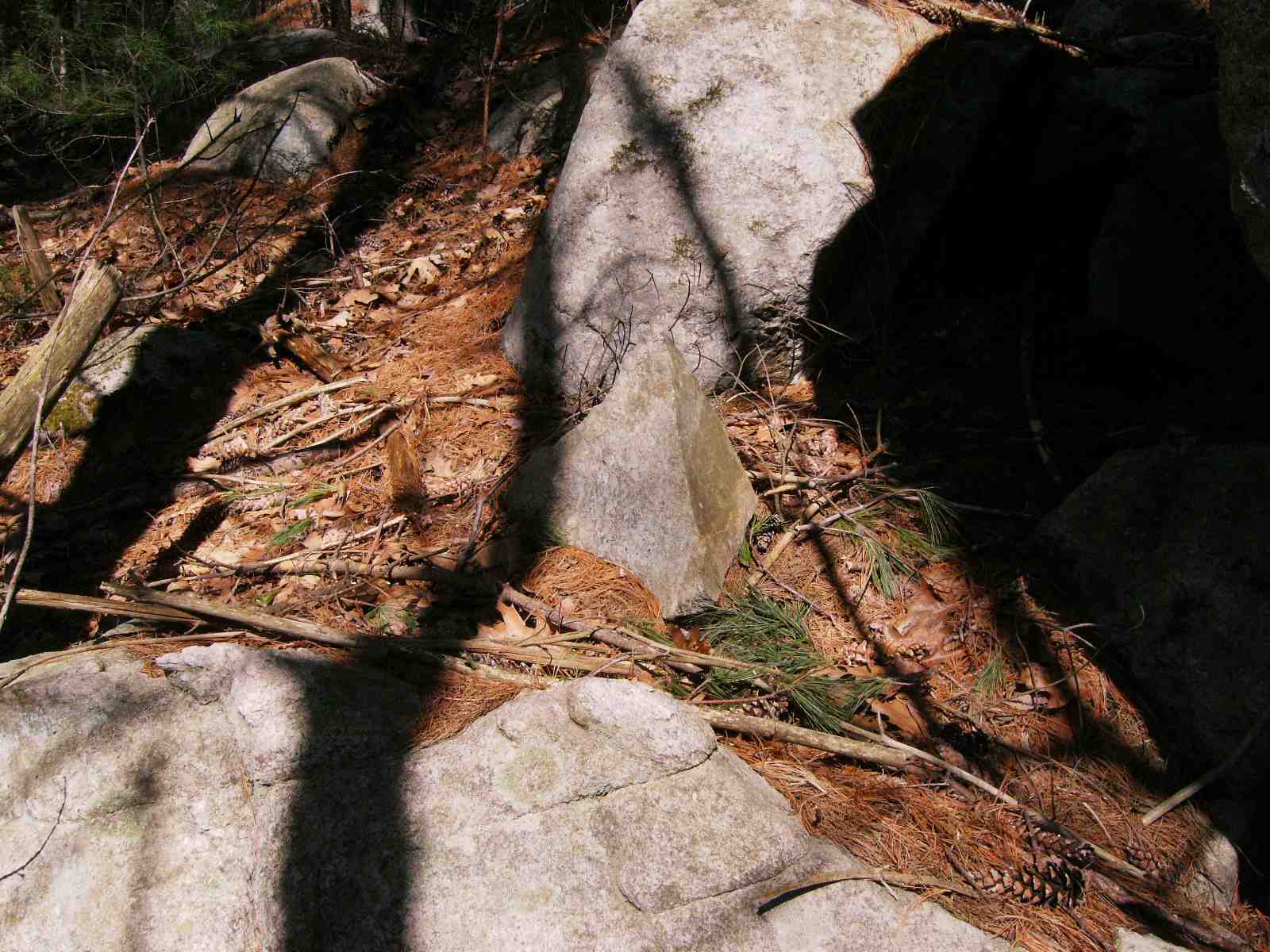
If we continue to the west, there is an opening in the wall. At the center of the opening is a stone with a vein of quartz. This might have been a cairn that was too close to the road to survive. To the north of these split stones are other large split stones. There is also a pedestal stone that is about ten feet tall. Pictures of these stones taken last winter can be found at Boulders. I will also create a page with additional photographs of these boulders, especially the pedestal stone.
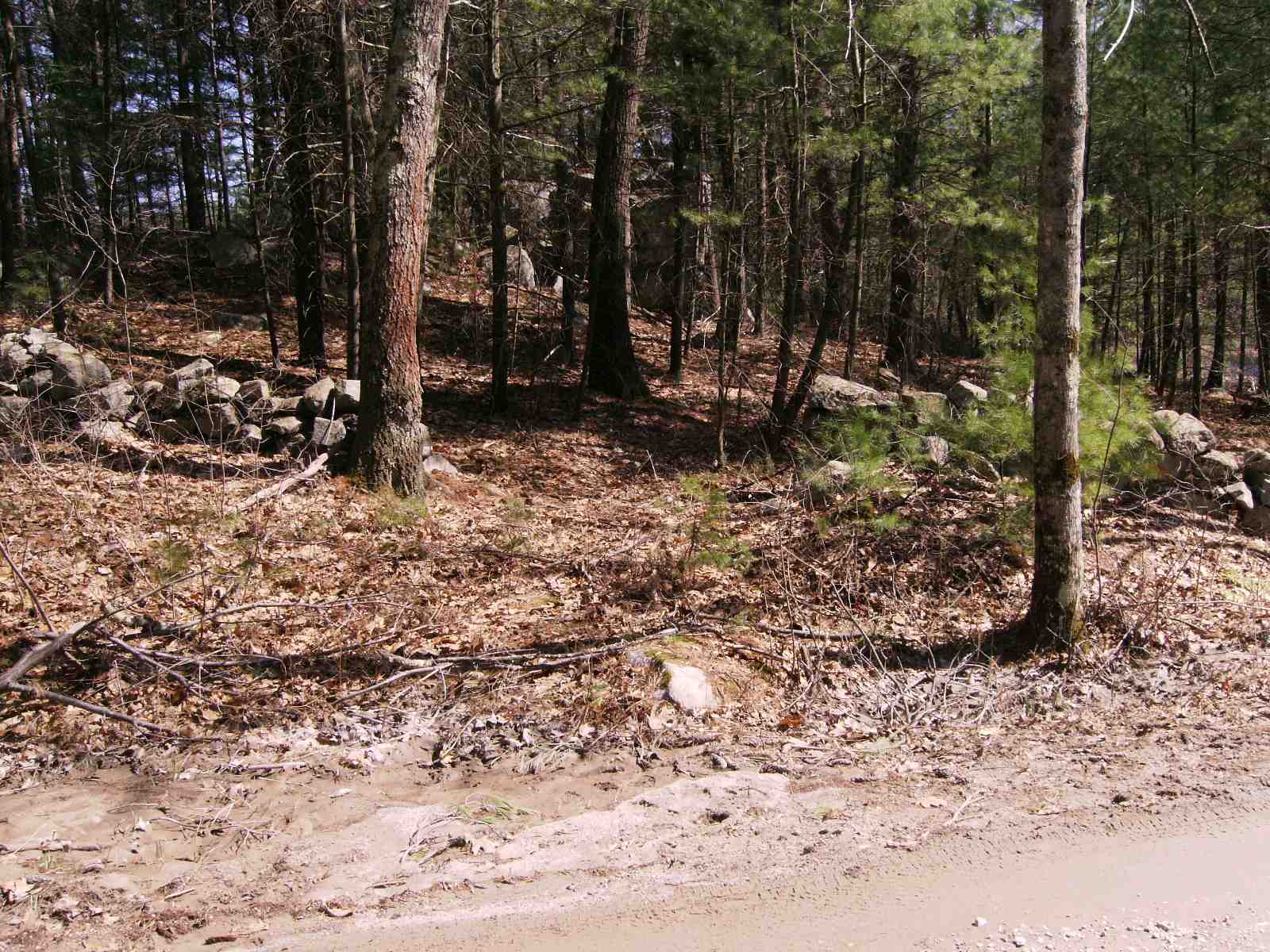
I returned to the beaver dam and continued east and northeast along the brook. I found no cairns or other markings. Since I grew up here, I knew that there was something very important ahead. My family had discovered a strange stone some fifty years ago, when we purchased the property. It is a footprint stone. There are two perfectly formed human footprints, about three feet apart embedded in the stone. After fifty years, the top of the stone is completely covered by pine needles and the surface is no longer visible. I decided not to uncover the footprints without advice from a real archeologist. When we discovered the stone, it was obvious that somebody had dug out from around the rock. The excavation is about three feet deep and extend six to ten feet from the stone. I have no idea who or why. The former owners were a farmer and his school-teacher wife.
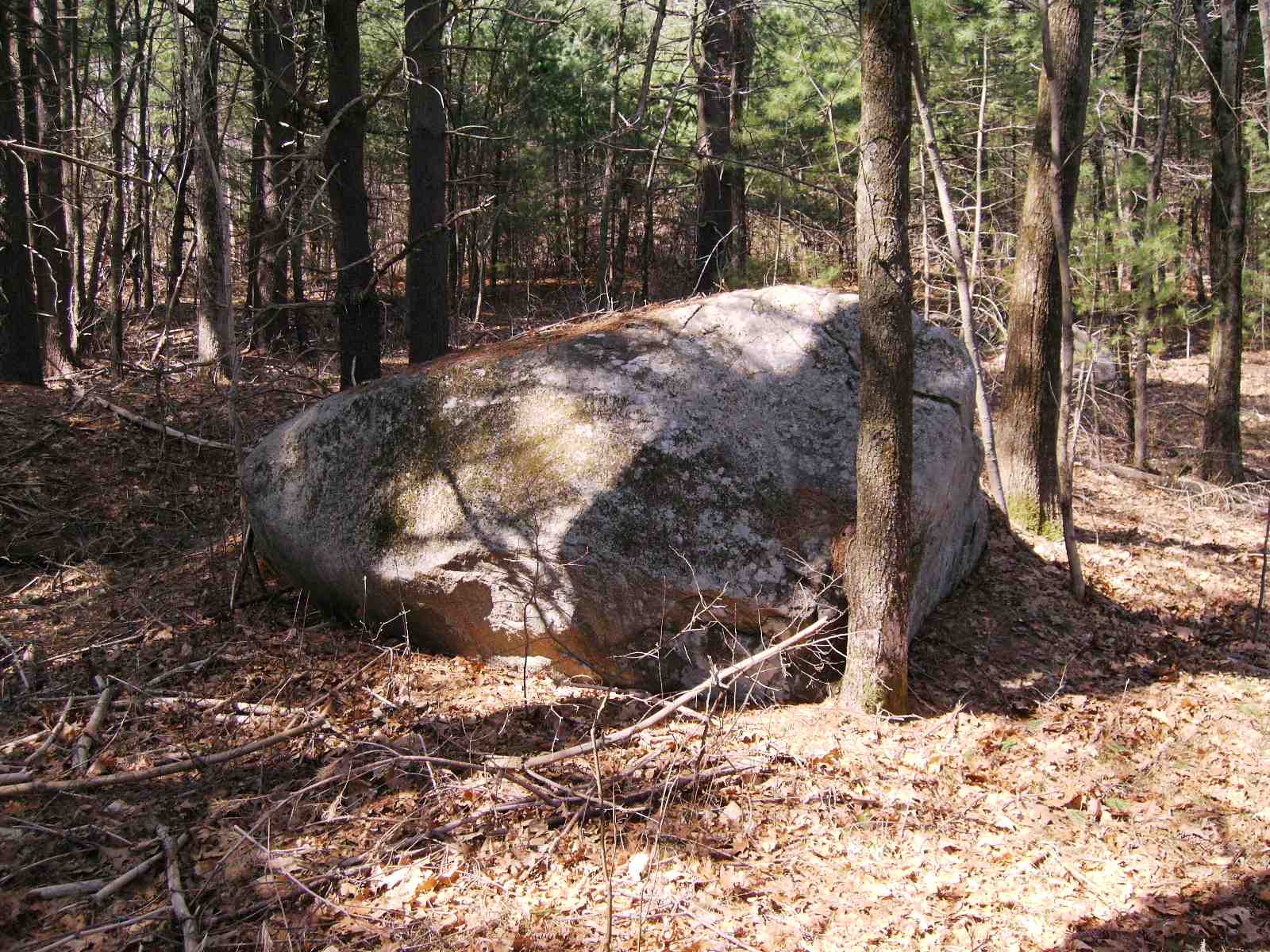
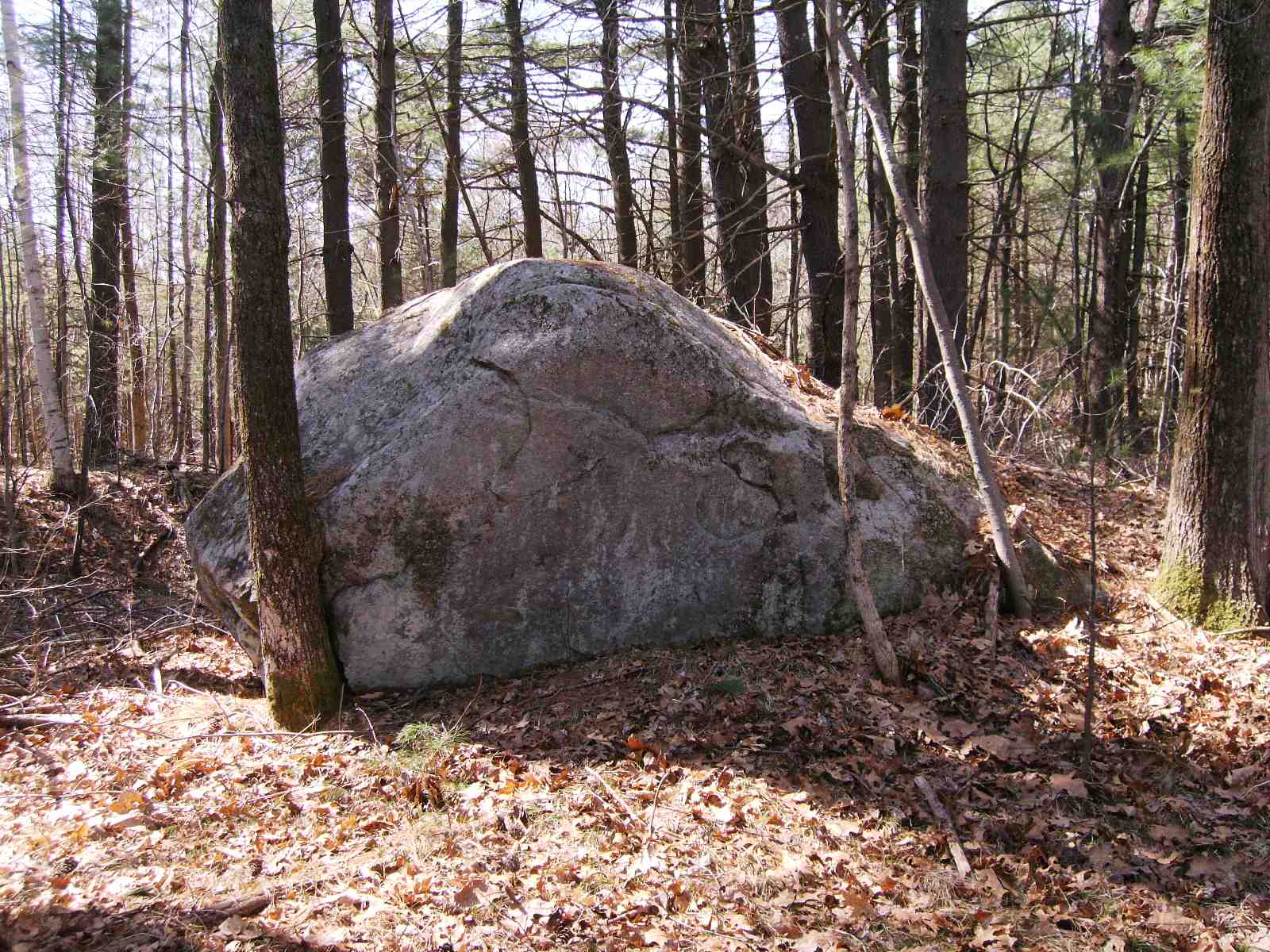
I made a quick search of the site and could find no cairns or markings. When I reached the highway, which is only a hundred feet from the stone, something caught my attention. It is pointing toward the stone, and has a nice vein of quartz, but it does not look old enough, and I cannot believe that it could have survived so many years on the side of a major highway.
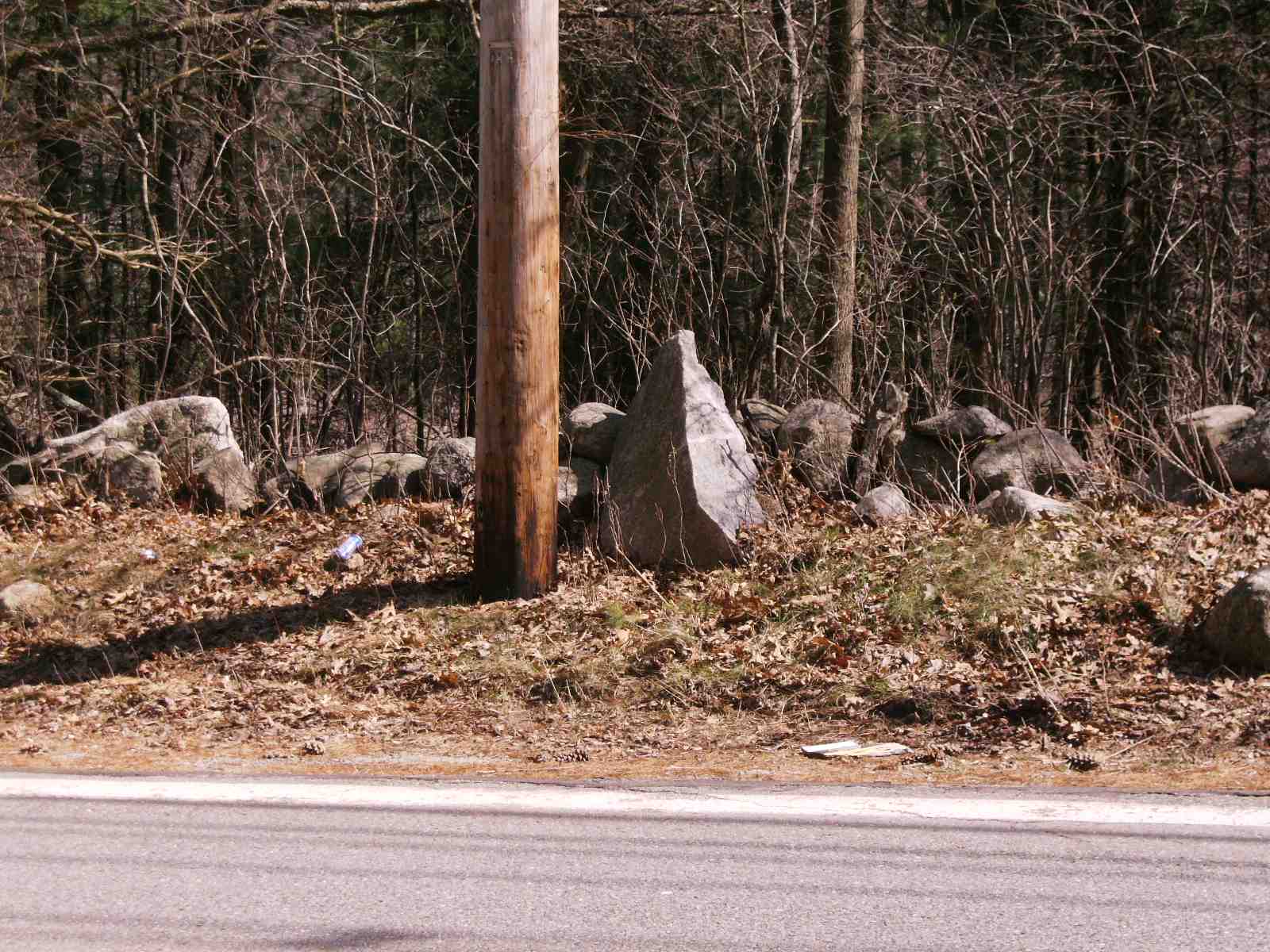
After taking this picture, I crossed the road and continued downstream.
